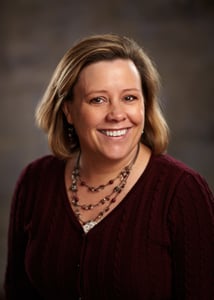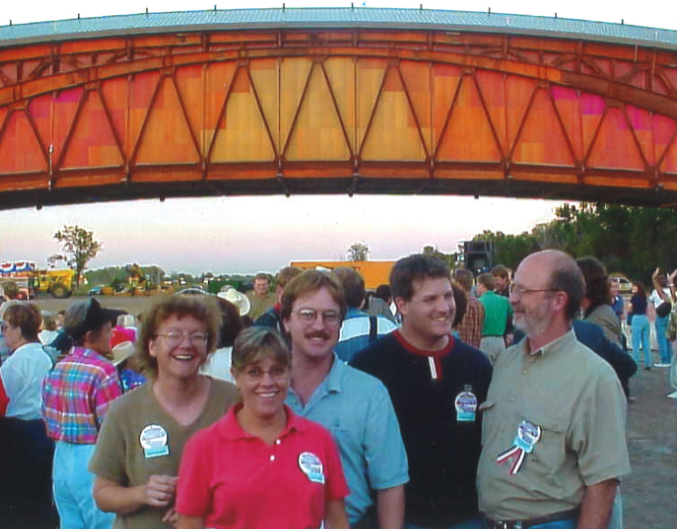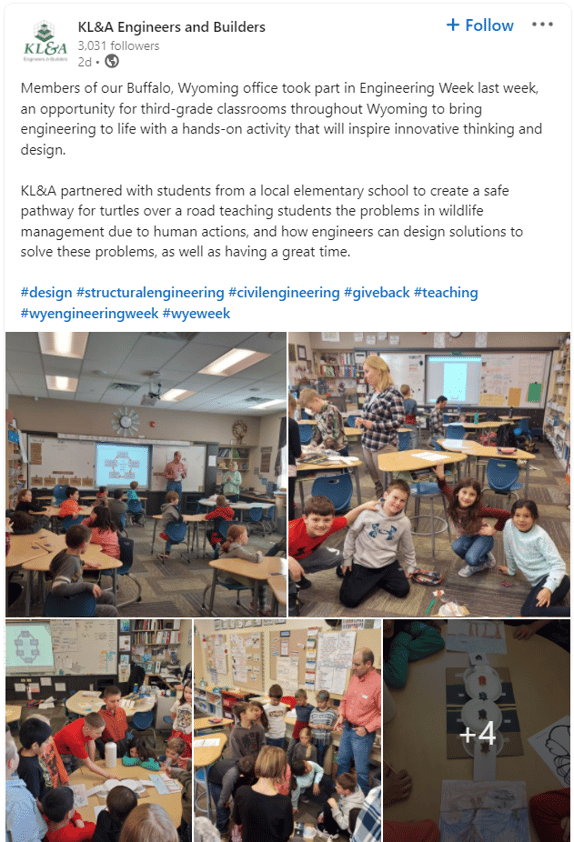A Steel Detailer turned Chief People Officer, Camie Beagan Reflects on the Challenges and Rewards of Building a Career in Construction

You’re not like anyone else in this organization.
These might not be the best words to hear from your boss, but they worked out okay for Camie Beagan. A detailer for 20+ years at KL&A, an engineering, construction, and detailing firm in Colorado and Wyoming, Camie now serves as the company’s Chief People Officer.
Since that pivotal conversation, she was asked to take on HR responsibilities to help build careers and people instead of buildings.
Now, among her many other duties, she helps promote diversity, equity, and inclusion in her company and for the construction industry at large. KL&A is focused on initiatives like YODA, their Youth Outreach and Development Activators, to promote STEM awareness among underrepresented groups in elementary and middle schools.
SDS2 interviewed Beagan about her journey as a woman in construction, how she went from being an unwilling steel detailer to a leader in her field, and the power and importance of diversity in the industry.
Edited excerpts follow below:
How did you become a steel detailer?
I started as an interior design student in the early 80s because that is the path most women took in the building/design industry. About halfway through college, I knew I was no designer and started looking into construction management, but it was a male-dominated environment with hardly any females. I literally was the only female in any crossover classes I had with the construction department.
I decided to finish the degree I started and figured it out from there. I stumbled into a job drafting for an architect, and then, when the economy crashed, for my friend’s dad who was a structural engineer. When he was getting ready to retire, he pointed me toward this group that was starting a new business and looking for steel detailer. I had tried detailing before, and I told them it wasn’t really my jam. But they sent me to this SDS2 training in Nebraska, and long story short, I ended up detailing at KL&A for 20+ years and managed the department for 18 years.
What made you decide to stick with it?
I grew into the role—I think it satisfied my need to solve problems and create. The hook for me was the challenge and the encouragement of the people around me to keep pushing myself. The software did a lot of the work I didn’t like about detailing, so I could focus on what I did like, which was the problem solving, creativity, contact with clients, and relationship building.
There was also the excitement of helping build a young organization. KL&A was started with this idea of combining engineering, construction, and detailing. We were trying to sell something the industry didn’t really understand or know about, and I was determined to make it work.
What have been some of the highlights of your career with KL&A?
The highlights for me really are the relationships I have built throughout the years with clients I have been privileged to work with and the great people in our organization. I would not be where I am in my career without their support and encouragement.
One of the things I miss the most about detailing is having the opportunity to create every day. I am learning plenty in the HR environment, but each building has its own obstacles to overcome, and the projects we work on are just phenomenal. We’re always pushing the envelope.
One standout for me was the Archway Museum in Kearney, NE. Anybody that drives across Nebraska on I-80 has likely seen it. It was a very challenging project early in my career, and I learned so much about the industry and building relationships.

Camie Beagan (second from right) with other members of the KL&A team at a ceremony for the Archway
in Kearney, Nebraska, in 2000. The monument and historical museum spans Interstate 80.
Did you experience any challenges as a woman in a male-dominated field early in your career?
Through the years, sure, there were a few times my boss stepped in to say if you can’t work with Camie, we won’t work with you. There were a few people I struggled with that the men in my organization had no issues with. Even my co-workers said that it was likely because I was a woman.
But really, I can’t think of too many cases that being a female created obstacles. I worked directly with steel erectors and fabricators early in my career and was treated with great respect. There are probably more instances that I am not aware of or remembering, but it was a different time. Either I was too blind to realize it, or more likely, I just learned to live with it and move on.
How has the landscape changed for women in construction and steel since you started?
It’s definitely changed a lot. In our detailing department, four of our eleven staff are female and one of them runs the department. We might be a little ahead of the curve here, but it is still a very predominately white, male-dominated industry.
Early in our history it was a struggle to hire female engineers or detailers because there weren’t many to choose from. The education system and industry has been providing more opportunities for women in STEM careers, which was definitely not the case when I was in school. Today there are just more women in the pool of candidates to choose from. Now the bigger challenge is expanding those opportunities to people of different ethnic, racial, and socioeconomic backgrounds.
Why is diversity, equity, and inclusion so important for your organization—and for you?
One thing our organization realized is that if we’re not part of the solution, we’re part of the problem. We cannot fix it alone, but we need to do our part. So we are trying to understand what we don't know and take ownership of what we can.
One of our organization’s values is continuous evolution and improvement. Getting different influences from different people is only going to make us better. One of our taglines is that we build great things with great people, and we’re not just talking about building buildings. We’re building our organization, building careers, and now building a DEI environment. It’s been incredibly rewarding to be part of that, and my goal for the rest of my career is to build a foundation for people so they, too, can experience and grow the way I did.

Why do you think more women and underrepresented groups should consider careers in construction?
I think it’s not so much about who you are, but about what fuels you. What gets you out of bed in the morning. One of the challenges of the construction environment is that most entities are trying to shed risk which often means things get pushed to others. Although it can be an unforgiving environment, when projects do come together and are successful it is incredibly rewarding.
You have to want challenges, you have to navigate adversity, you have to love to create and to solve problems. I don’t care what color you are or if you’re from Mars—if that’s what fuels you, then you’re going to thrive in this environment.
